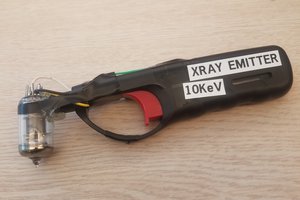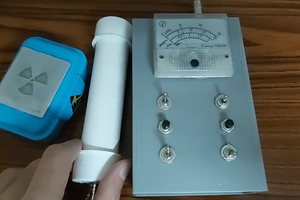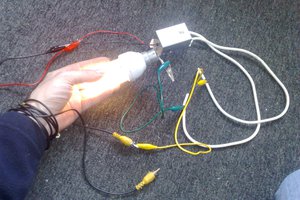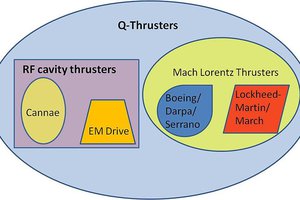Cosmic rays are extremely high energy radiation that come from outside our solar system. Cosmic rays with energies up to 300 EeV have been detected[1], however the peak energy density is about 0.3 GeV[2]. Even these lower energy particles have vastly more energy than even the LHC can produce at 4 TeV[3]. These cosmic particles are primarily (99%) atomic nuclei stripped of their electron shells, with the vast majority (90%) being simple protons[4].
These energetic particles collide with other molecules when they enter the Earth’s atmosphere. This collision produces a cascade of secondary particles within about a degree of the original trajectory. These secondary particles include muons, protons, alphas, pions, electrons and neutrons[5]. The primary component (over half) of these air showers at sea level is muons resulting from the decay of pions and kaons (typically within meters).
Cosmic ray flux varies with altitude, latitude/longitude and azimuth angle. Early experiments with cosmic ray detectors confirmed the change in flux with altitude, indicating their extraterrestrial origin[7]. The flux increases with altitude with a peak around 15km but then falls off rapidly. Because of their charged nature, cosmic rays are deflected toward the poles by Earth’s geomagnetic field resulting in the change in flux vs latitude[6]. The charge of the particles also causes a change in flux vs azimuth, with the positive charge leading to increased flux from the west[8].
References
- Nerlich, Steve (12 June 2011). "Astronomy Without A Telescope – Oh-My-God Particles". Universe Today. Universe Today.
- Nave, Carl R. "Cosmic rays". HyperPhysics Concepts. Georgia State University.
- "Facts and figures". The LHC. European Organization for Nuclear Research. 2008.
- "What are cosmic rays?". NASA, Goddard Space Flight Center.
- Morison, Ian (2008). Introduction to Astronomy and Cosmology. John Wiley & Sons. p. 198. ISBN 978-0-470-03333-3.
- Clay, J. (1927). "Title unknown". Proceedings of the Section of Sciences, Koninklijke Akademie van Wetenschappen te Amsterdam 30: 633.
- "Nobel Prize in Physics 1936 – Presentation Speech". Nobelprize.org. 1936-12-10.
- Rossi, Bruno (August 1930). "On the Magnetic Deflection of Cosmic Rays". Physical Review 36 (3): 606.
 Ethan Harstad
Ethan Harstad



 Omar Khorshid
Omar Khorshid
 Morning.Star
Morning.Star
 Albert Latham
Albert Latham
I have three old GeLi detectors I am going to re-drift and put in series as a telescope.